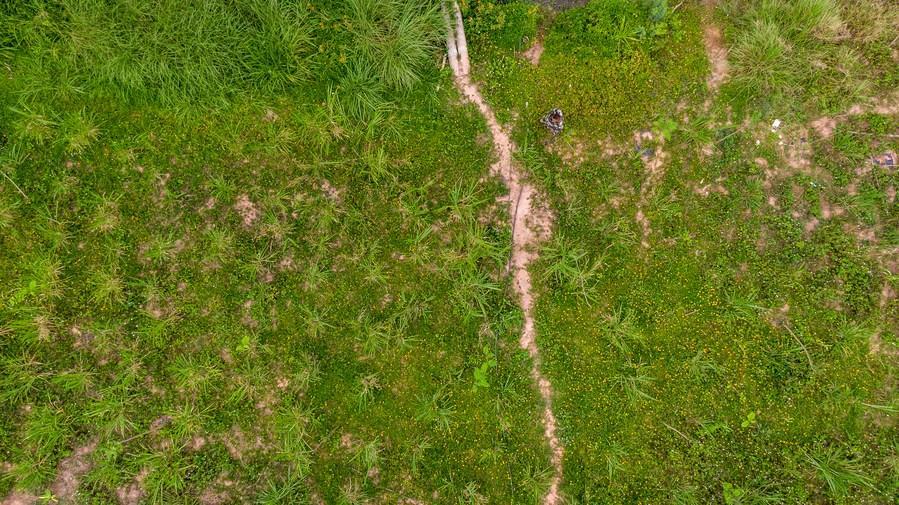Xinhua | May 23, 2023
Residents in the rural area are used to having unexpected visitors - wild animals like hedgehogs and weasels. But what if the intruder is an elephant?
Pu Cuifen, from a village in Eshan County, southwest China's Yunnan Province, had that experience two years ago when a herd of wild Asian elephants left their forest habitat in Xishuangbanna, trekked hundreds of kilometers northward to the provincial capital Kunming and then headed back home to the nature reserve.
"I've only seen elephants in a zoo before, not expecting a wild elephant would appear at my doorstep," said Pu, a villager group leader, adding that she immediately mobilized villagers to evacuate overnight for safety.
The elephants harmed no one but had corn and beans in the farmland, causing losses of up to 50,000 yuan (about 7,127 U.S. dollars). With government-supported insurance, the villagers got compensated soon.
"Learning the elephants arrived home, we felt happy for them," said Pu.
This aerial photo taken on Aug. 13, 2021 shows a herd of wild Asian elephants in Mojiang County of Pu'er, southwest China's Yunnan Province. (Photo by He Yougang/Xinhua)
This epic journey of wild Asian elephants indicates an increasing population of the species in China and provides a successful experience to solve the "human-wildlife conflict," said Chen Fei, director of the Asian elephant research center under the National Forestry and Grassland Administration.
Monday marks the International Day for Biological Diversity.
With the continuous ecological conservation efforts in China, endangered wild animal species, such as Asian elephants, snow leopards and Siberian tigers, have seen a rise in populations and expanded their habitats, with humans exploring ways to avoid conflict and coexist with them in harmony.
COEXISTENCE WITH LOVE
Asian elephants, a pivotal species in the rainforest ecosystem, are under first-class national protection in China. The elephants are mostly found across Yunnan.
Although its population is declining worldwide, the population of the endangered species in China has grown from 150 in the 1980s to 360 at present, thanks to protection efforts over the past decades.
Statistics show up to two-thirds of wild Asian elephants have wandered out of the nature reserve, leading to more contact with humans.
In the past, villagers would chase away the elephants to protect their crops and avoid financial losses, which may irritate the animals and lead to human injuries or deaths. Afraid of the giant animals, some villagers did not dare to leave their homes or farm in the field.
Wan Yong, head of the provincial forestry and grassland bureau, said Yunnan raised the compensation standard for the crops more prone to be consumed by elephants. Such compensation will help protect the interests of farmers and, at the same time, avoid the wild animals seeking food on farms from being attacked, said Wan.
The province has also created "canteens" for the wild elephants, growing over 600 hectares of their favorite food, such as elephant grass and bamboo.
This aerial photo taken on May 9, 2023 shows a field where people grow favorite food for wild elephants in Dadugang Township of Jinghong City, Dai Autonomous Prefecture of Xishuangbanna, southwest China's Yunnan Province. (Xinhua/Hu Chao)
A national park for Asian elephants is also in the works.
Wang Chuan, 44, lives in a village in Jiangcheng County, where a dozen wild elephants wander nearby.
"Instead of attacking them or chasing them away, villagers now simply leave them alone," said Wang. "Our crops might get damaged, but we tolerate them with love."



